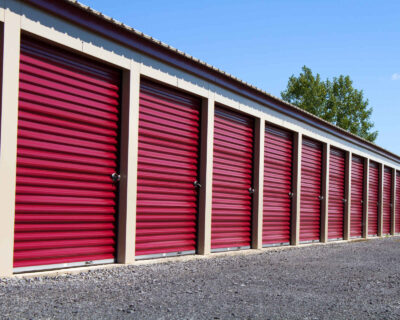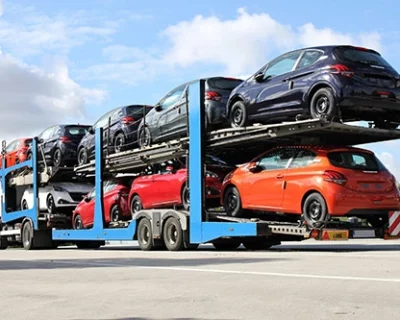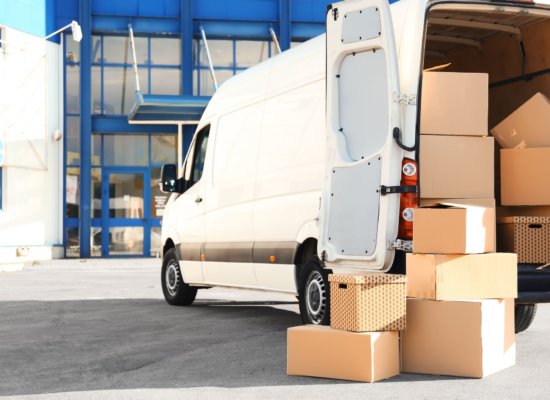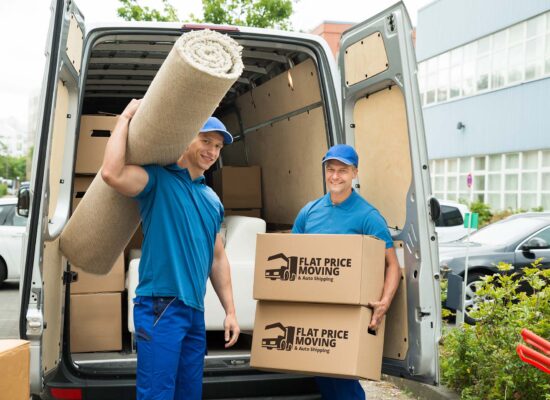Efficiently Managing a Small Long-Distance Move – Key Strategies and Tips
Embarking on a small long-distance move can be both a thrilling adventure and a logistical challenge. This journey, often filled with anticipation and new beginnings, also demands smart planning and effective strategies to ensure a smooth transition. Imagine weaving through the tapestry of your move with ease, where each step, from packing treasured belongings to settling into your new space, becomes part of an exciting story.
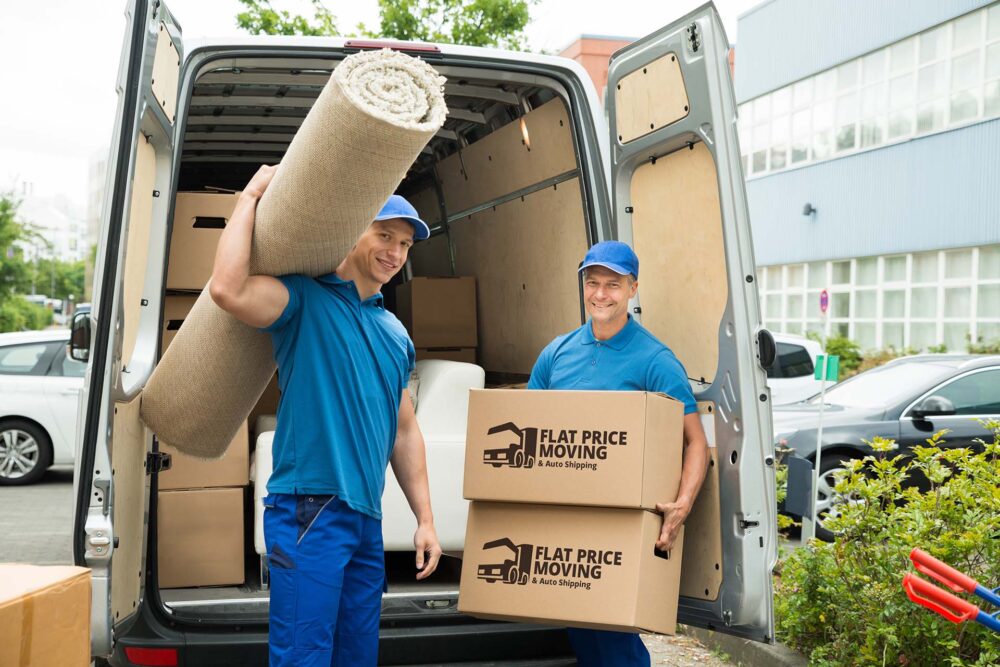
What is Considered a Small Long-Distance Move?
A small long-distance move typically involves relocating a modest amount of belongings over a significant distance, such as moving from one state to another.
Unlike larger relocations, which might require extensive logistics for a substantial volume of items, or local moves that cover shorter distances and often less complexity, a small long-distance move strikes a unique balance.
It necessitates careful streamlined relocation planning and efficient execution, yet usually deals with a more manageable load.
This type of relocation often calls for specialized cross-country moving solutions. To relocate efficiently, it’s crucial to plan a move meticulously, considering factors like the size of the shipment, the distance, and the specific needs of your relocation.
How to Plan and Organize a Relocation
When it’s time to organize a relocation, especially for a small long-distance journey, a step-by-step guide is invaluable. Start by charting out a clear roadmap weeks or even months in advance, considering the specific logistics involved in a smaller-scale transition. Categorize belongings and decide what is essential for the new setting. Arrange for reliable transportation solutions that specialize in long-distance transfers.
As part of the organizational process, don’t forget to include a personal touch, like hosting a moving away party, an ideal way to bid farewell to your current locale while embracing the upcoming change. Detail every phase, from initial sorting to the final setup in the new space, ensuring a systematic and stress-free transition.
Tips for Creating a Comprehensive Moving Checklist and Timeline
Crafting a moving checklist for a small-scale relocation is a strategic approach to avoid common relocation mistakes. This checklist should be comprehensive, starting with an inventory of belongings to be transferred. Prioritize tasks like securing transportation and finalizing housing arrangements at the new location. Incorporate deadlines for each task to create a timeline, ensuring nothing is overlooked.
It’s advisable to have a contingency plan in case of unexpected delays or issues. Additionally, consider the logistics of the new setting – will you need storage solutions or special arrangements for certain belongings? Remember, a well-thought-out checklist and timeline can be the difference between a chaotic transition and a seamlessly executed relocation.

Declutter and Downsize to Make Everything Efficient
Downsizing for relocation is a pivotal step in ensuring a simplified moving process, especially when transitioning from a house to an apartment. This process involves carefully evaluating your belongings to decide what truly needs to be part of the new setting.
Start by sorting through items room by room, categorizing them based on necessity and usage. Emphasize the limited space often available in an apartment and focus on retaining items that serve multiple purposes or hold significant sentimental value.
Selling or donating items that are no longer needed not only simplifies the logistics of your relocation but also helps in creating a more organized and spacious new living environment. Remember, effective decluttering is not just about removing excess items – it’s about making room for fresh experiences in a new home.
How to Decide What to Keep, Sell, Donate, or Discard
As you prepare for a relocation, deciding what to keep, sell, donate to The Salvation Army, or discard plays a critical role. Begin by assessing each item’s practicality and emotional value. Items that haven’t been used in over a year and don’t hold significant sentimental value are prime candidates for sale or donation.
Organize a yard sale or use online platforms to sell items in good condition. Charitable donations can give a new life to items you no longer need, benefiting others while decluttering your space. For items that are neither usable nor in a condition to be donated, consider environmentally friendly disposal methods.
This systematic approach not only eases the burden of relocation but also paves the way for a fresh start in a new home, surrounded by only the things that add value to your life.
Watch the video below if you are struggling to decide whether to sell or donate:
Find the Right Long-Distance Moving Company
Choosing the right long-distance moving company can be a pivotal decision when relocating, especially for those requiring reliable but cheap long-distance moving services. When searching for affordable long-distance movers, it’s crucial to consider not just the cost but the range of services offered.
This is particularly important for those dealing with a small move long distance, where finding an auto transport and moving company that accommodates smaller loads without compromising on quality or efficiency is essential. The ideal company should offer a balance of affordability and comprehensive service options, ensuring possessions are transported safely and efficiently, regardless of the distance.
How to Compare Costs and Services of Long-Distance Movers
To effectively compare the costs and services of cross-country movers, especially when moving small loads across the country, it’s essential to conduct thorough research. Begin by obtaining quotes from several companies to understand the market rates.
While comparing, consider not just the price, but also the breadth of services offered. This holistic approach can help you save on moving costs without sacrificing service quality. Pay attention to details like insurance coverage, packing services, and storage options, as these can significantly impact the overall value and your relocation experience.
Moving Insurance
Flat Price Moving and Auto Transport Company offers moving insurance to cover potential damages
Read moreStorage Service
Knowing what kind of surprises cross country move may hold, we offer 30 day free storage for belongings at the origin state.
Read moreAuto-Transport
If your first concern is having your vehicle transported safely and efficiently, enclose shipping is the way to go.
Read moreWhat Questions Should You Ask Cross-Country Movers?
When engaging with cross-country movers, especially if you’re moving out for the first time, it’s vital to ask the right questions to avoid potential moving scams. Inquire about their licensing and insurance, their experience with long-distance moves, and specific services like moving and car shipping.
Ask for references or read reviews to gauge their reliability. Understanding their policies on delays, damages, and cancellations is also crucial. This due diligence will not only provide peace of mind but also ensure a smoother, more secure relocation process.

Packing Tips for Small Moves
For small relocations, efficient packing is key. One of the best packing and relocation hacks is to prioritize what’s needed. Start by decluttering, ensuring that only essential items make the move. When it’s time to pack efficiently, use suitcases and backpacks for clothing and personal items.
When packing furniture, disassemble what you can and use blankets or bubble wrap to protect pieces during transit. Make use of towels and linens as cushioning materials for fragile items. Investing in quality packing tape and strong boxes of various sizes will also aid in the process, ensuring belongings are secure and organized.
Tips for Packaging and Organizing Items Into Boxes
When packaging items into boxes, it’s crucial to choose the best-sized boxes for each item. Heavier belongings such as books should be placed into smaller boxes, while lighter things can be packed into larger boxes.
By using this method, boxes are kept from becoming overly heavy and challenging to move. What is more, keeping a moving-out list will help you track what goes into each box, making it easier to find items during unpacking. Group similar items together and fill empty spaces with packing paper or bubble wrap to prevent movement and potential damage during transit.
Tips for Labeling Boxes So the Unpacking Can Be Effortless
Do you want to experience an effortless unpacking process? Then, the right answer is to organize and label boxes in a way that there won’t be any confusion as to when it’s time to furnish the home and unpack everything. The greatest labeling tips are in this list:
- Use bright, distinct markers for visibility.
- Write the contents and destination room on each box.
- Implement a color-coding system using stickers or colored tape for different rooms.
- Add special handling instructions like “Fragile” or “This Side Up” where necessary.
- Consider using relocation labels that include a brief inventory of the box’s contents.
- For electronic devices, label cords, and their corresponding devices.
- If possible, number the boxes and keep a master list to track everything.

How to Organize Important Documents for a Long Distance Small Move
Begin by gathering all critical paperwork such as birth certificates, passports, financial records, property deeds, and insurance policies. Categorize these documents into clearly labeled folders or envelopes. Consider using a color-coding system or tabs to quickly identify each category.
It’s advisable to create digital copies of all important documents as a backup. Store these securely on a cloud service or a USB drive. For added security, especially during the relocation, keep these documents in a fireproof and waterproof portable file organizer. This method ensures that the most important information is easily accessible.

Use Experts at Small Long Distance Moves to Handle Everything
Utilizing the expertise of professionals like Flat Price Moving & Auto Shipping company for moving small loads across the country. Our experts are equipped to handle everything from efficient packing and secure transportation of belongings to the safe relocation of vehicles. By employing strategic packing methods, ensuring the safekeeping of important documents, and relying on the experienced handling of your possessions, you can experience a stress-free relocation.
If you’re planning a small long-distance move and seek a hassle-free experience, don’t hesitate to contact us Flat Price Moving & Auto Shipping company. The team at our auto transport company is dedicated to providing a smooth and efficient relocation experience, tailored to your specific needs.
FAQ
What Are the Best Ways to Reduce Moving Costs for a Long-Distance Move?
Compare quotes from various companies to find competitive rates. Opt for a flexible relocation date, as some periods are less expensive. Sell, donate, or discard unnecessary items to lessen the load. Seek out recycled or free boxes and supplies. Consider shared transportation options for belongings.
How Far in Advance Should I Plan a Small Long-Distance Relocation?
Ideally, start planning 2-3 months in advance. This time frame allows for researching companies, decluttering, arranging logistics, and handling paperwork without rush.
What Are Some Effective Packing Methods for Limited Items?
Use suitcases and bags for clothing and personal items. Wrap fragile items in clothing or linens for protection. Utilize space efficiently by nesting smaller items inside larger ones. Label containers clearly for easy identification.
How Do I Choose the Right Relocation and Car Shipping Company for a Small Long-Distance Relocation?
Research companies specializing in small-scale relocations. Look for reviews and ratings for quality of service. Confirm they have appropriate licenses and insurance. Get detailed quotes and compare services offere
What Should I Prioritize When Downsizing for a Relocation?
Focus on keeping items that are essential, multi-functional, or of high sentimental value. Digitize documents and photos to save space. Sell or donate items that won’t fit or be useful in the new space.
What Are the Best Ways to Adjust to a New City After Moving?
Explore the neighborhood to familiarize yourself with amenities. Join local groups or activities to meet people and build a network. Establish a new routine to quickly adapt to the new environment.
Can I Relocate My Small Amount of Belongings Without Professional Movers?
If the amount is minimal, consider using a personal vehicle, renting a small van, or shipping items. For longer distances, parcel services or postal shipping for small boxes might be cost-effective. However, evaluate the feasibility based on the quantity and size of items.




